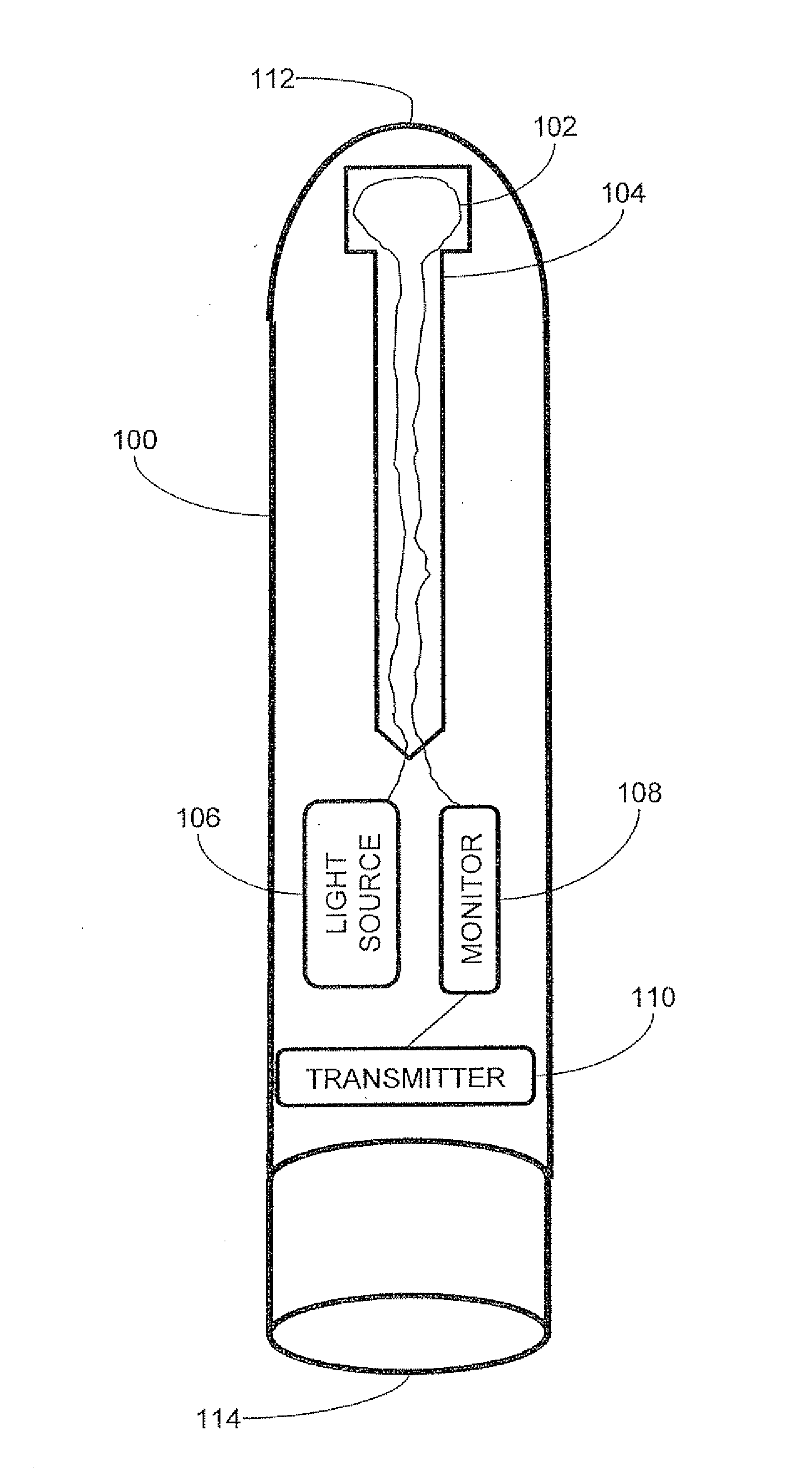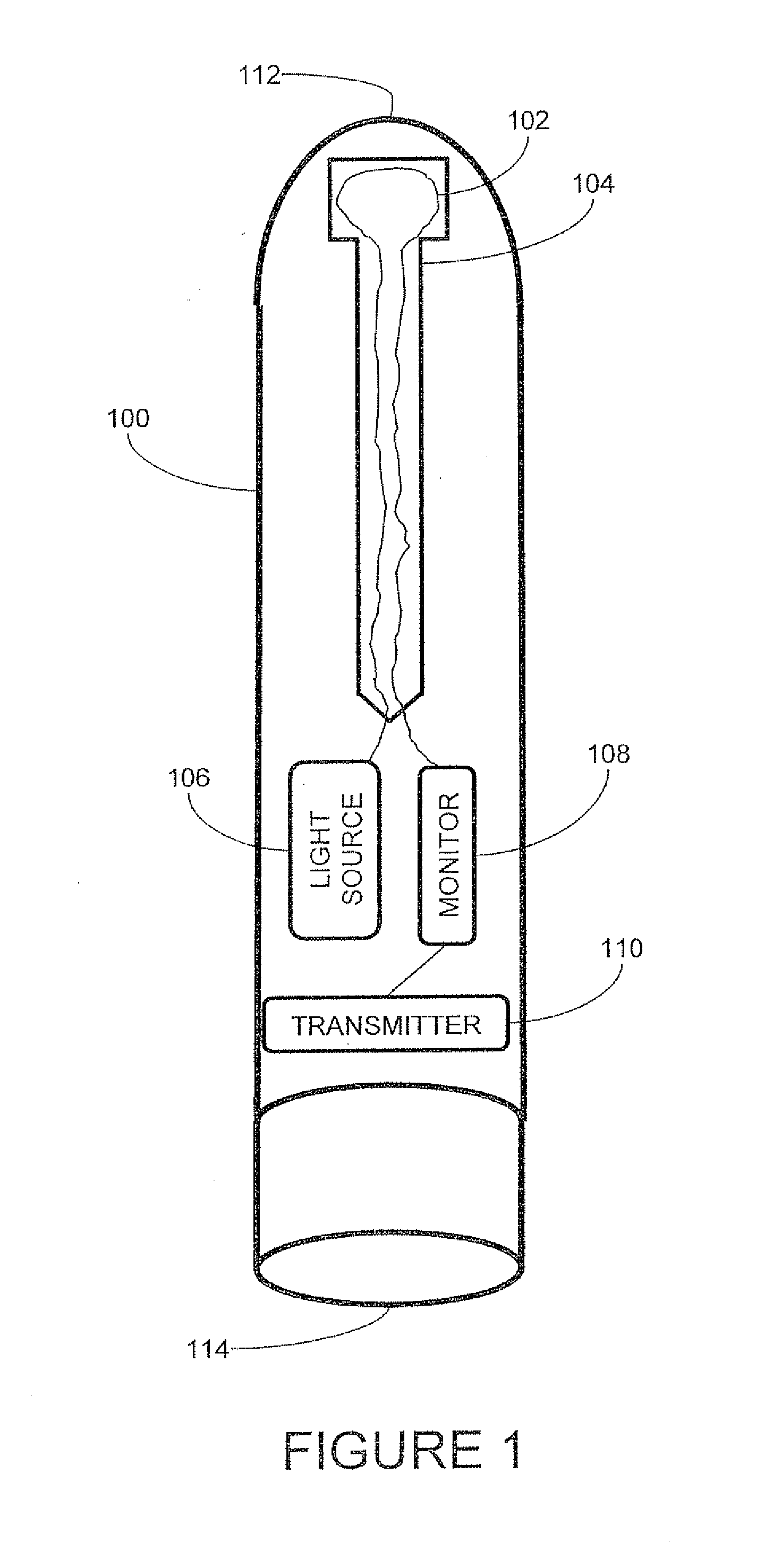Ultra-high velocity projectile impact sensor
a projectile impact sensor and ultra-high-speed technology, applied in the field of sensors, can solve the problems of insufficient method, inability to send impact notification messages, and limited sound through metal construction materials of projectiles to limit the propagation speed of shock waves
- Summary
- Abstract
- Description
- Claims
- Application Information
AI Technical Summary
Problems solved by technology
Method used
Image
Examples
Embodiment Construction
[0016]The present invention is an apparatus and method for detecting the impact of an ultra-high velocity projectile impact. The principles and operation of this apparatus and method according to the present implementation may be better understood with reference to the drawings and the accompanying description.
[0017]Referring now to the drawings, FIG. 1 is a diagram of a projectile 100 that can travel at ultra-high velocities. In the context of this invention, the term ultra-high velocity refers to collisions occurring at relative velocities above about 1500 m / s. When the projectile collides with a target, the impact results in the destruction of the projectile. When a projectile strikes a target, it is desirable to know that the impact occurred. In this case, the projectile needs to send a notification that it has had an impact after the impact has occurred, but before the projectile is destroyed by the impact. As described in the background section of this document, conventional s...
PUM
| Property | Measurement | Unit |
|---|---|---|
| relative velocities | aaaaa | aaaaa |
| velocities | aaaaa | aaaaa |
| relative velocities | aaaaa | aaaaa |
Abstract
Description
Claims
Application Information
 Login to View More
Login to View More - R&D
- Intellectual Property
- Life Sciences
- Materials
- Tech Scout
- Unparalleled Data Quality
- Higher Quality Content
- 60% Fewer Hallucinations
Browse by: Latest US Patents, China's latest patents, Technical Efficacy Thesaurus, Application Domain, Technology Topic, Popular Technical Reports.
© 2025 PatSnap. All rights reserved.Legal|Privacy policy|Modern Slavery Act Transparency Statement|Sitemap|About US| Contact US: help@patsnap.com



